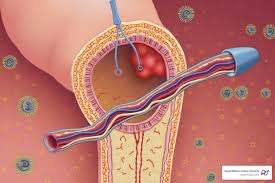Vascular disease affects the body’s network of blood vessels, which includes arteries, veins, and capillaries. When the health of these vessels is compromised, it may lead to serious health problems by disrupting blood flow. Understanding how other health conditions relate to vascular health provides a clearer picture of managing overall wellness. Here is more information about the connection between diabetes and vascular complications:
Buildup of Plaque
High blood sugar levels, a hallmark of diabetes, contribute to the development of atherosclerosis, which is the hardening and narrowing of arteries due to plaque buildup. This plaque consists of fat, cholesterol, calcium, and other substances found in the blood. Over time, the plaque hardens and narrows the arteries, limiting the flow of oxygen-rich blood to your organs and other parts of your body.
This process may happen gradually. You might not notice any symptoms at first. As the arteries become narrower, the reduced blood flow may cause issues like chest pain or leg pain during activity. The buildup makes it harder for your heart to pump blood effectively through the narrowed vessels.
Inflammation and Damage
Diabetes is also associated with chronic inflammation throughout the body. High glucose levels may trigger an inflammatory response in the lining of the blood vessels. This constant state of inflammation damages the vessel walls, making them more susceptible to plaque formation.
The damaged areas become less flexible and less able to regulate blood pressure and blood flow properly. Healthy blood vessels may expand and contract to meet the body’s needs, but inflammation makes them stiff and dysfunctional. This ongoing damage accelerates the progression of atherosclerosis and increases the likelihood of blood clots forming.
Over time, this process can lead to the narrowing and hardening of the arteries. Chronic inflammation may also exacerbate other underlying conditions, further complicating cardiovascular health. Take proactive steps to reduce inflammation, such as adopting a healthy diet, regular exercise, and stress management.
Nerve Damage and Blood Vessels
Vascular disease and diabetes may also be linked to nerve damage. High blood sugar may injure nerve fibers throughout your body, but it most often affects the nerves in your legs and feet. This nerve damage has implications for vascular health because the nerves that control blood vessel constriction and dilation may also be affected.
Diabetes Increases Risks
Living with diabetes introduces several factors that heighten the risk of developing complications. Beyond high blood sugar, many people with diabetes also have other conditions that contribute to blood vessel damage, including:
- High blood pressure (hypertension): This puts extra strain on artery walls.
- High cholesterol: Elevated levels of “bad” LDL cholesterol contribute to plaque.
When these conditions exist together, they create a compounding effect that significantly accelerates damage to the vascular system. Managing diabetes involves managing these related risk factors as well. Addressing blood sugar, blood pressure, and cholesterol levels together is a comprehensive approach to protecting your blood vessels.
Get Treated for Diabetes and Vascular Disease
The connection between diabetes and vascular disease is clear, with one condition often worsening the other. Managing diabetes effectively is a primary step in protecting your vascular health. This includes monitoring blood sugar levels, following a balanced diet, and engaging in regular physical activity as recommended by your healthcare provider. If you have concerns about diabetes or vascular disease, scheduling an appointment with a healthcare professional is a positive first step. Contact a cardiologist today to learn more about your treatment options.

